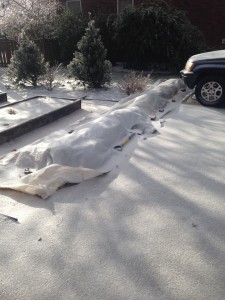Imagine for a minute, you’re at a garden center… just browsing.
It’s the middle of Spring and a confederate Jasmine vine catches your eye.
The small yellow blooms are attractive and you instantly know the perfect spot for it at home.
A garden center employee mentions to you “It grows like a weed, but might not be cold hardy”, she says. You make the purchase anyway because it’s gorgeous and take it home.
One look at the plant tag says it’s a Zone 8 plant. What does this mean and where should I plant it?
Cold Hardiness Zone
Cold hardiness is the rating a plant receives to indicate how cold a temperature it can withstand before damage. The USDA developed the Cold Hardiness Zone Map. Find your zone. Click here.
For Tennessee, Zone 8 is the warmest zone. Zone 8 is located near Memphis. This means that the cold weather typically doesn’t fall below zero degrees Fahrenheit. But it’s not a sure thing.
Cold hardiness zones are based on temperature averages over the previous decades. It’s well known the North-Western Hemisphere is in a slight warming trend, but each year the temperature could swing near record lows.
Zone 6 is the coldest climate in Tennessee, located in the eastern part of the state.
What is the best planting location for tender plants?
- Plant susceptible tender plants on the southern side of the home and as close to the foundation as possible.
The heat from the home will radiate to the root system in the Winter. If the root system survives, the plant will flush new fresh growth in Spring. If the southern side and home foundation are not available, avoid a windy alley. Frigid cold wind causes dessication, or drying out of plant stems.
What Does Winter Damage Look Like?
- Dessication damage may occur with stem splitting or stem die back.
Hard pruning is required to remove the dead stems. This may or may not be acceptable to you. Removing the dead stems will allow to the plant to flush new growth the following Spring. The new growth will hide the stem stumps.
Another way to protect susceptible plants is to wrap them in burlap or plastic. This traps humidity and warmer air. It helps eliminate dessication. For more info, click here.
How Do I Minimize the Possibility of Damage?
- Purchase and Install cold hardy trees and shrubs.
That means if you’re in a Zone 6, 7, or 8, use trees and shrubs with a cold hardiness of 3, 4, and 5. These plants are extremely resistant to cold damage. A great hardy shrub is hydrangea.
Do you have any more tips that I didn’t mention? Please continue the conversation on the Facebook page.





